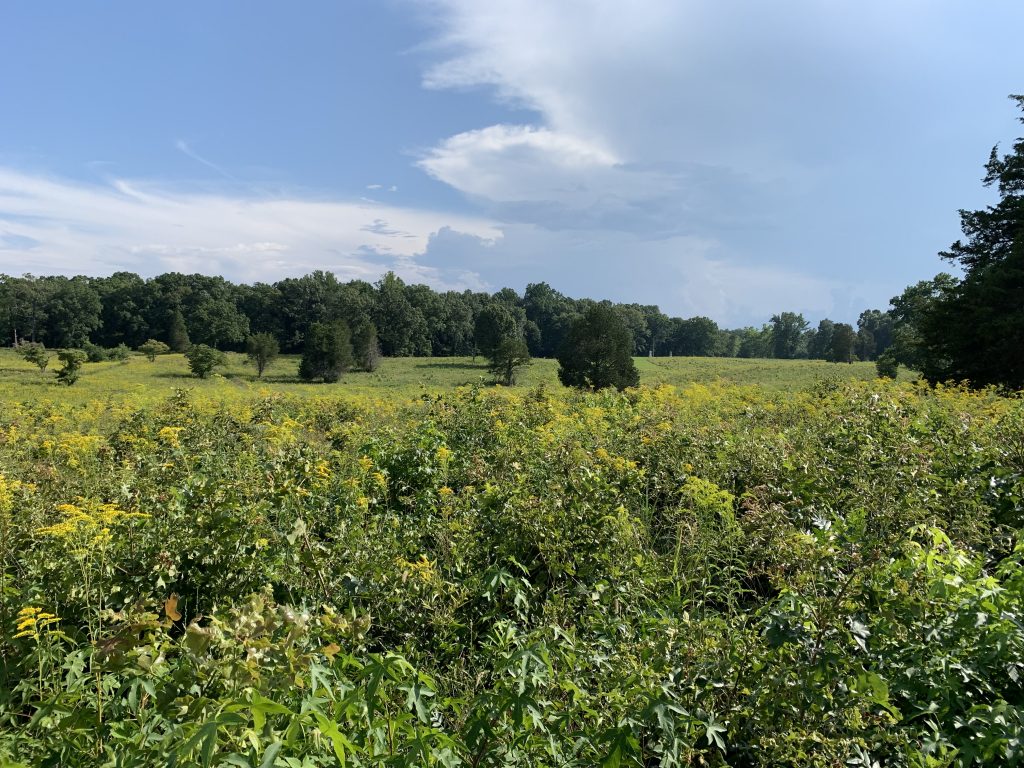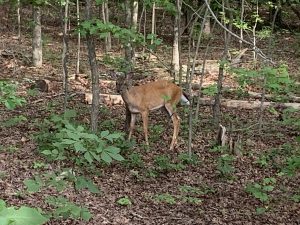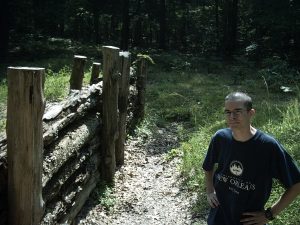Reflections from the Mule Shoe
I had the privilege of speaking at the 2022 Emerging Civil War Symposium. It was a great experience to share my research with the larger community of both historians and the group’s supporters and fans. I made the trek from Texas to Virginia on Thursday, reaching the Fredericksburg area the afternoon before the symposium began. I suddenly had time for some sightseeing and wanted to make the most of the few hours of daylight I had to spare.

Where to go amongst all of the historic sites and battlefields surrounding Fredericksburg? After all, the Fredericksburg-Spotsylvania National Military Park alone covers four battlefields from 1862, 1863, and 1864. And that does not count the many smaller sites, state parks, and other national parks within a short drive. I quickly made the subconscious decision that I would head to Spotsylvania.
Reaching the Spotsylvania battlefield, I unsurprisingly gravitated to the Mule Shoe, that exposed salient in Robert E. Lee’s lines that became known as the Bloody Angle for the massive assault that took place there on May 12, 1864. Reaching the small parking lot for that part of the park, I got out and commenced walking the trail.
This was not my first time at Spotsylvania’s battlefield, though I had not been there for sixteen years. As I walked the trail, tracing the fortification of the Mule Shoe salient and the lines that U.S. forces held just before they made their May 12 assault, I began reflecting. First I thought of the soldiers who fought on this patch of earth, site of some of the Civil War’s most sustained and bloodiest combat.
Something seemed off to me and I realized I was the only person there. The parking lot was empty and no one else was on the trails. All I heard were the chirping of birds and buzzing of insects. Some deer, perhaps ten in all, eyed me from different parts of the trail and adjoining woods. This was a stark contrast to the mayhem of 1864, where tens of thousands of men were packed into one square mile firing at one another so much that entire trees were felled by bullets.

My thoughts then shifted to the last time I walked this ground. It was the summer of 2006 on a trip with my dad. I had just completed my first year of studies at the University of New Orleans and perhaps we both made the trip as an escape from the struggles in rebuilding the city in a post-Hurricane Katrina situation.
We made trips in previous years to sites such as Gettysburg, Antietam, Appomattox, New Market, Shiloh, and Vicksburg. For the summer of 2006, we would make a massive road trip from New Orleans ending up in Virginia. It began with visits to the National Civil War Naval Museum in Columbus, GA, and a visit to the Andersonville prison camp. From there we went to Charleston and saw Fort Sumter and the submarine Hunley before moving north to see Fort Fisher in Wilmington, NC. Then we hit Bentonville, NC. Reaching Virginia, I took my dad on a tour of the Overland Campaign, beginning in the Wilderness before hitting Spotsylvania, North Anna, and Cold Harbor. Then we discovered Richmond including the Confederate Executive Mansion and the Tredegar Iron Works (now all part of the American Civil War Museum) before continuing on to Petersburg.
It was really cool to follow the Overland Campaign from start to finish and helped me understand how campaigns evolve. For my dad, seeing the sites this way let him see greater context in why certain battles were fought. Walking the Mule Shoe in 2022, thinking about that 2006 trip, I gained some new perspective. Historians often say that their efforts are not a one-person job. Many have helped us in our work and studies. Often, we credit professors, advisors, mentors, or colleagues as helping shape and support our historical ventures.
Standing alone (with the birds and deer), I thought about how my parents had just as much a part in shaping my development as a historian. Always willing to buy me books, take me to a reenactment, and driving either cross-state or cross-country to see sites, they helped me learn to love studying the past in many ways. Their encouragement and support helped make me the historian I am today.

After spending a couple of hours walking the trails around the Mule Shoe. I returned to the small and still-abandoned parking lot. Pulling out my phone I called my dad. We spend 30 minutes talking about those trips we made in my high school and college years, how much fun we had with them, and how much we learned.
I suppose the moral of the story is that many people have influenced my expanded interest in the Civil War, helping mold me into the historian I am today. Whether you are a professor, public historian, park ranger, writer, or Civil War buff who likes to read about the conflicts and walk the many historic sites, we all have had similar influences that molded those interests. Taking some time every now and then to introspectively reflect on how you became interested in learning more about the Civil War era and who supported that interest can be well worth the effort.
Inspiring. Thanks for reflecting on that.
Neil, thank you. On my two trips to Spottsylvania, separated by two decades, I too was surprised (but for selfish reasons, not disappointed) about the few visitors. As a result, I was able to lose myself in the terrain and the quiet witness of nature to the history made there.
The Mule Shoe including the Bloody Angle is my favorite part of the Spotsylvania Court House Battlefield. I love giving the Bloody Angle tour, but never more than when I gave it during May 2014 Sesquicentennial anniversary month!
Excellent comments. Thanks for writing..
Thank you for posting.
I visited “the “mule shoe” fifty years ago w/ my young son and daughter. There were no other visitors on a sweltering July morning as we wandered, talked and reflected upon the history before us. It remains a valued memory for all three of us.
That is one of the better comments i have read on here thank you. I am largely alone in my civil war journeys. I don’t mind it as it is what it is but your post makes me both happy you have that and a little mellow for myself. Yet it was a very positive post. Thank you!
I’ve been to the Mule Shoe and Spotsylvania 4 times in my life. It is sad that such sites don’t seem to garner many visitors. Perhaps it’s a matter of advertising? Other historical sites and artifacts across the land seem to do a pretty good job at that, why not Spotsylvania and other Civil War sites? I fear that the old mindset of “out of site, out of mind” can rear it’s dark side, and thus these locations, hallowed though they may be, will be consumed by other interests over time. The fact is that well over a hundred THOUSAND casualties we’re incurred at the Chancellorsville/Wilderness to Fredericksburg to Spotsylvania triangle, not to mention the myriad of smaller clashes within that and the casualties they produced. What happened at those locations from 1862 through 1864 set in motion what would follow as far as the final campaigns of the war. It just seems to me that there is so much that can be ‘sold’ here.
I visited Spotsylvania in 2019, and spent a great deal of time in the Mule Shoe area. I had an ancestor killed there on 5/10/64. This was the trial run date.
His name was Nathan Marple of the 6th Corps, 119th PA Volunteers.
Terrific experience!